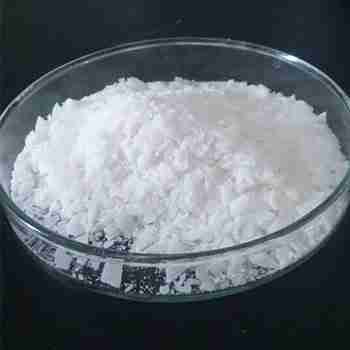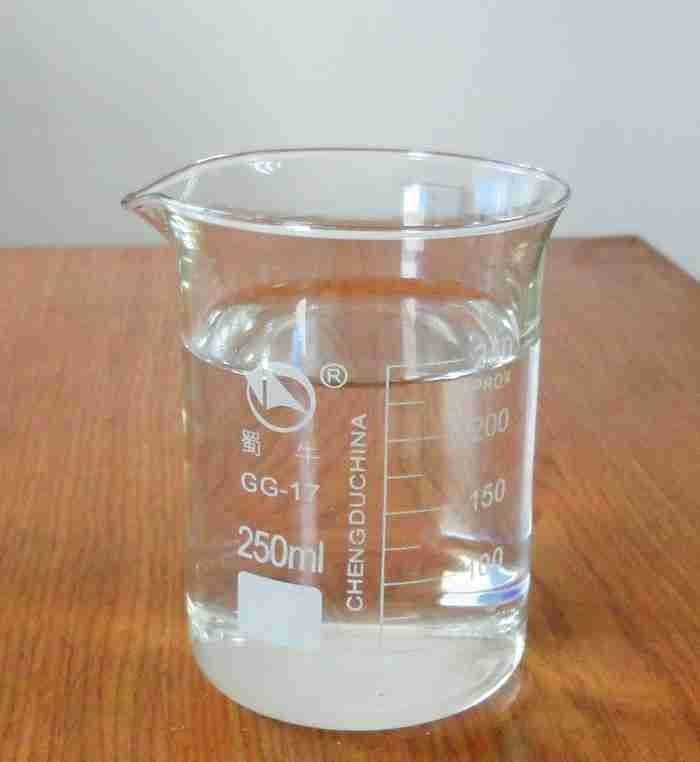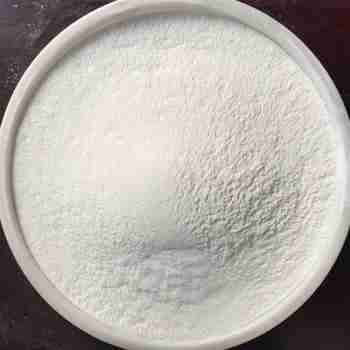Poly(ethylene glycol) distearate CAS 9005-08-7
Chemical Name:?Poly(ethylene glycol) distearate; PEGDS.
CAS No.: 9005-08-7
Appearance: liquid, paste or solid.
Packaging: 200kg iron drum, 50kg plastic barrel, 25kg Kraft paper bag.
Sample: available
related documents:
COA of PEG-6000DS
TDS of PEG Fatty Acid Ester Series
Request for product documents
发送询盘
Description
Poly(ethylene glycol) distearate?Details
Chemical Name: Poly(ethylene glycol) distearate; PEGDS; PEG Fatty Acid Ester
CAS No.: 9005-08-7
Molecular Formula: C19H40O4
Molecular Weight: 332.5185
Appearance:?liquid, paste or solid.
Poly(ethylene glycol) distearate?Properties
Type
Specification
No.
Polyethylene glycol stearic acid ester
Glycol Monostearate
EGMS
Glycol Two-stearic acid ester
EGDS
Diethylene glycol Monostearate
DEGMS
Diethylene glycol Two-stearic acid ester
DEGDS
Polyethylene glycol?400?Monostearate
PEG400MS
Polyethylene glycol?400?Two-stearic acid ester
PEG400DS
Polyethylene glycol?6000?Two-stearic acid ester
PEG6000DS
Polyethylene glycol laurate
Polyethylene glycol?200?Single-laurate
PEG200ML
Polyethylene glycol?200?Two-laurate
PEG200DL
Polyethylene glycol?400?Single-laurate
PEG400ML
Polyethylene glycol?400?Two-laurate
PEG400DL
Polyethylene glycolOleate
Polyethylene glycol?400?Single-ester oil
PEG400MO
Polyethylene glycol?400?Two-ester oil
PEG400DO
Polyethylene glycol?600?Single-ester oil
PEG600MO
Polyethylene glycol?600?Two-ester oil
PEG600DO
Polyethylene glycol?4000?Single-ester oil
PEG4000MO
Polyethylene glycol?6000?Single-ester oil
PEG6000MO
PEG-264Oleate
PEG-264Oleate
?
Poly(ethylene glycol) distearate?Technical index:
Specification
Appearance(25??)
Acid value
mgKOH/g
Saponification valuemgKOH/g
HLB
EGMS
Lunatia to cream color solid
???5
170??185
2??4
EGDS
Lunatia to cream color solid
??10
185??200
1.5
DEGMS
Lunatia to cream color solid
???5
160??170
3.5
DEGDS
Lunatia to cream color solid
??10
184??194
3
PEG400MS
Lunatia to cream color solid
???5
75??95
10.7??11.7
PEG400DS
Lunatia to cream color solid
??10
110??130
7.2??8.2
PEG6000DS
Lunatia to cream color solid
???8
14??22
18
PEG200ML
Colorless to light yellow liquid
???5
140??155
9.5
PEG200DL
Colorless to light yellow liquid
??10
195??210
8
PEG400ML
Colorless to light yellow liquid
???5
90??110
13
PEG400DL
Colorless to light yellow liquid
??10
130??155
10.5
PEG400MO
Amber liquid
???5
75??95
11??12
PEG400DO
Amber liquid
??10
100??130
7??8
PEG600MO
Amber liquid
???5
60??75
13??14
PEG600DO
Amber liquid
??10
85??105
10??11
PEG4000MO
Yellow solid
???5
10??15
18??18.5
PEG6000MO
Yellow solid
???5
5??10
19
PEG-264Oleate
Yellow liquid
???2
115??125
?
Poly(ethylene glycol) distearate?Usage
Specification
Ussage
EGMS
EGDS
1. Soluble in isopropanol, toluene, soybean oil, mineral oil, with emulsification, solubilization, softness, antistatic properties.
2. It is used as emulsifier, dispersant, solubilizer, lubricant, softener, defoamer, antistatic agent, pearlescent agent and pharmaceutical intermediate in textile, fiber processing, metal processing and cosmetics.
DEGMS
DEGDS
1. It is insoluble in water, ethanol and ether, but can be dispersed in hot water.
2, the pharmaceutical industry as solvent, emulsifier, dispersant, penetration enhancers; textile industry as emulsifier, sunscreen agent, pearlescent agent; food industry as emulsifier, perfume, pigment solubilizer, stabilizer, foam regulator.
PEG400MS
1. It is soluble in various organic solvents and dispersed in water. It has emulsifying, solubilizing, wetting and softening properties.
2, the textile industry as emulsifier, softener, lubricants; cosmetics, metal processing industry as cleaning agents, lubricants, brighteners; paper industry, as paper starch coating thickener, stabilizer; water dispersible paper wetting agent, softener; pharmaceutical industry as liquid medicine, emulsion agent emulsifier; can also be used for oil emulsification; paint, printing ink grinding auxiliary.
PEG400DS
1. Soluble in ethanol, isopropanol, toluene and other organic solvents, dispersed in hot water, with dispersion, emulsification, shading, solubilization, thickening performance.
2. In textile industry, it is used as fiber lubricant, softener and antistatic agent; in cosmetics, it is used as thickener, solvent and emulsifier; in metal processing, it is used as lubricant; in paper industry, it is used as porous and absorbent toilet paper; it is also used as resin plasticizer.
PEG200ML
It is dispersed in water and forms turbid liquid with mineral and vegetable oil. As defoamer in waterborne coatings. Vinyl plastic sol can be used as viscosity reducing agent, hair dye cream as viscosity control additive and paper softening additive.
PEG200DL
Soluble in isopropanol, * *, carbon tetrachloride and other solvents, dispersed in water, used as self emulsifying auxiliary emulsifier and lubricant, mold release agent, viscosity control agent.
PEG400ML
It is dispersed in water and has emulsifying, lubricating and defoaming properties. It can be used as lubricant in latex paint, lubricant, leveling agent and defoamer in fiber processing, pigment grinding dispersant, oil solvent solubilizer, vinyl plastic sol anti adhesion agent, cosmetic and pharmaceutical emulsifying agent.
PEG400DL
It can be used as oil soluble emulsifier, softener, lubricant and antistatic agent in chemical fiber oil agent, coupling agent and lubricant in textile industry, degreasing agent and coolant additive in metal processing, paper release agent, industrial and civil detergent.
PEG400MO
It is soluble in benzene and isopropanol and dispersed in water. It is used as industrial lubricant, industrial degreasing agent, viscosity stabilizer of vinyl plastic sol, textile softener and lubricant. It is used as dry cleaning agent and oil-based cutting fluid balance emulsifier. Biodegradable
PEG400DO
It is soluble in mineral and vegetable oil and dispersed in water. It can be used as w / O emulsifier, solubilizer, kerosene emulsifier and industrial lubricant.
PEG600MO
PEG600DO
PEG4000MO
PEG6000MO
1. Soluble in water, it has good washing, emulsifying and lubricating properties.
2. It is used as O / W emulsifier in cosmetics, leveling agent, dispersant and softener in textile industry, and lubricant in metal processing. It can also be used in water-soluble coatings and acid washing of printed circuit boards.
PEG-264Oleate
1. It is soluble in oil and organic solvent, and has good smoothing and emulsifying effect;
2. Emulsifier widely used in the manufacture of synthetic fibers has the characteristics of low freezing point, good viscosity temperature property, low volatility and good oxygen resistance.
?
Poly(ethylene glycol) distearate?Packaging and Shipping
200kg iron drum, 50kg plastic barrel, 25kg Kraft paper bag. shelf life: two years.
Poly(ethylene glycol) distearate?Storage
Notes: Keep in Cool, Dry, Ventilated and Lightless Place.
Shelf life:2 years.
| 5 |
|
0 |
| 4 |
|
0 |
| 3 |
|
0 |
| 2 |
|
0 |
| 1 |
|
0 |
- 2
- 2-diallylpent-4-en-1-amine
- 4
- 95-16-9
- Ammonium sulfamate
- Benzothiazole
- cas:67889-00-3ح2
- cas:83524-75-8 | pigment black 32
- cas:928836-00-4 | 2
- cas:932745-70-5 | 4
- Chemical Minerals
- Coconut diethanolamide
- Daily Chemicals
- discount
- for sale
- General pvc resin
- hexyl D-glucoside
- in stock
- Lauramidopropyl betaine
- LAURIC ACID MONOETHANOLAMIDE
- Petroleum Additives
- Plasticiser
- Ploymers
- price
- PVC
- quotation
- Raw Materal
- Remove term: Petroleum Additives Petroleum Additive
- SODIUM ETHYL 2-SULFOLAURATE
Related Products
Common English name: 5-iodo-2,3-dihydropyridazin-3-one
CAS No.: 825633-94-1
Molecular formula: C4H3IN2O
Molecular weight: 221.98
Sample: Available
Coconut diethanolamide is a derivative of coconut fatty acids, where the fatty acid is reacted with diethanolamine to form an amide. This compound is commonly used as an emulsifier and viscosity modifier in personal care products such as shampoos, conditioners, and creams. It imparts a smooth texture and enhances the stability of formulations. Coconut diethanolamide is valued for its ability to improve the foaming properties and skin feel of products, making it a preferred ingredient for creating luxurious and effective formulations in the cosmetics and personal care industry.
Chemical Name: Potassium Castorate
CAS No.: 8013-05-6
Molecular Formula: C57H107K3O12
Molecular Weight: 1101.74718
Appearance: Yellow Liquid
Chemical Name: UV-120
Other Name: (2’,4’-Di-tert-butylphenyl 3,5-di-tert-butyl-4-hydroxybenzoate)
CAS No.: 4221-80-1
Molecular Fomula: C29H42O3
Molecular weight: 438.66
Assay: ≥99%(LC)
Lauryl Glucoside is an eco-conscious non-ionic surfactant, derived from sustainable lauric acid and glucose. It offers superior mildness and biodegradability, making it an ideal choice for formulating gentle and effective cleaning agents in personal care and household products. Its bio-based nature aligns with the growing demand for green chemistry solutions.
Chemical Name: 1,1,2,2-Tetrachloroethane
Other Name: Tetrachlorethane
CAS No.: 79-34-5
Molecular Formula: C2H2Cl4
Molecular Weight: 167.85
Appearance: Liquid
Chemical Name: Imazalil Sulfate
CAS No.: 58594-72-2
Molecular Formula: C14H14Cl2N2O.H2SO4
Molecular Weight: 395.26
Appearance: Solid
Hexyl D-glucoside is a non-ionic, plant-based surfactant derived from renewable resources such as corn or potato starch. It is recognized for its excellent skin compatibility and mildness, making it a preferred choice for formulations in personal care products, especially those targeting sensitive skin. With its superior solubilizing and foaming capabilities, it enhances the sensory experience of the product without compromising its gentleness. Its eco-friendly profile and biodegradability also align with green chemistry principles, appealing to consumers seeking sustainable product options.
Chemical Name: Dehydrocholic acid
Synonyms: Acide dehydrocholique; Triketocholanic acid
CAS No.: 81-23-2
Molecular Formula: C24H34O5
Molecular Weight: 402.53
Appearance: Powder
Chemical Name: Choline salicylate
CAS No.: 2016-36-6
Molecular Formula: C12H19NO4
Molecular Weight: 241.28
Appearance: Red-Brown Crystal
Sodium Ethyl 2-Sulfolaurate is a surfactant with a unique combination of properties. It is an anionic compound, derived from the sulfonation of ethyl laurate, which is then neutralized with sodium hydroxide. This results in a product that is highly effective in lowering the surface tension of water, making it an excellent wetting agent and emulsifier. It is commonly used in personal care products, detergents, and industrial applications for its foaming and dispersing capabilities. As a mild and biodegradable ingredient, it is favored for its environmental and skin-friendly attributes, ensuring safety and performance in a variety of formulations.
Chemical Name: 3-Hydroxybutyric acid
CAS No.: 625-71-8
Molecular Formula: C4H8O3
Molecular Weight: 104.1
Appearance: White powder



















Reviews
There are no reviews yet.